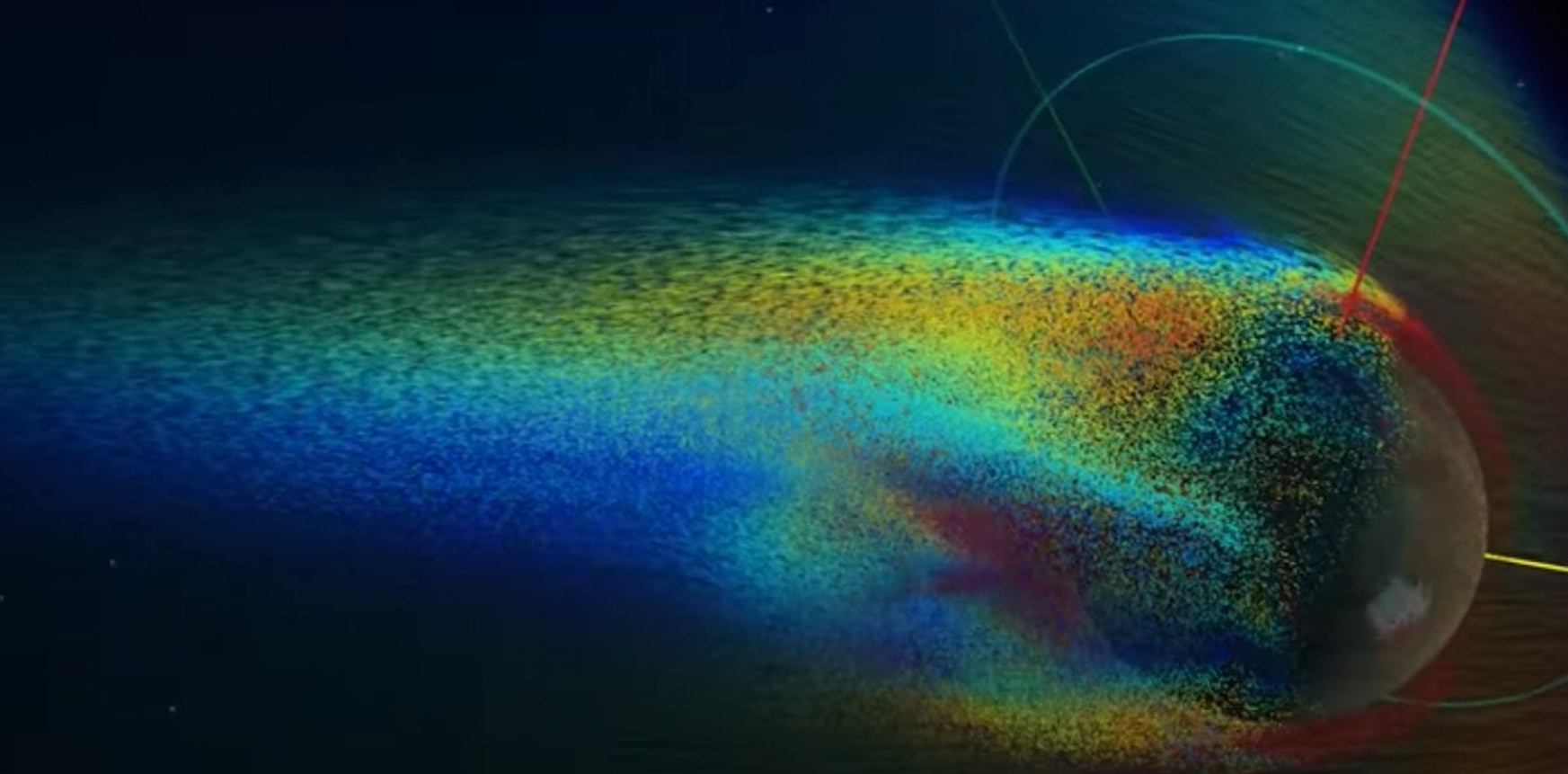The MAVEN spacecraft reveals how Mars lost its atmosphere

Four billion years ago, Mars was a much more life-friendly planet than it is today. The planet's atmosphere was denser, temperatures were higher, and there were numerous water tanks on the surface. The MAVEN probe has been checking for several years why such Mars is only in history.
Simply put, the atmosphere of Mars gradually escaped into space over all these years. Researchers belonging to the MAVEN (Mars Atmosphere and Volatile Evolution) mission team have analyzed the electricity of the Martian atmosphere, which may be responsible for the fact that the gas in the upper atmosphere gradually breaks away from it and escapes into space.
Using a probe orbiting Mars, researchers created a map of electric currents in its atmosphere. Analyzing the results of observations, the researchers noticed that the main factor escaping the Martian atmosphere is a constant stream of solar wind, i.e. high-energy particles emitted from the upper layers of the Sun's atmosphere.
As it turns out, electricity plays a key role in the loss of atmosphere that has transformed Mars from a life-friendly planet into a hostile desert life, "says Robin Ramstad, experimental physicist at the University of Colorado at Boulder and the lead author of the study.
As part of their research, scientists tried to determine how much the magnetic field of the planet affects its atmosphere. Earth has its own magnetic field, but Mars is gone. Instead, the charged particles released from the upper atmosphere of the Sun, the so-called solar wind, interact with the atmosphere of Mars, creating a specific magnetosphere around the planet.
Data collected as part of the mission indicate that the solar wind hits directly the atmosphere of Mars and flows around the entire part of the planet facing the sun.
The visualization created on the basis of these data clearly shows how electric currents move around Mars, moving from the daytime to the night side of the planet. These electric current loops connect the upper atmosphere of Mars and its magnetosphere with the solar wind.
Considering that X-rays and ultraviolet radiation emitted from the sun constantly ionize the upper layers of the Mars atmosphere, there are always many particles that will strongly react with any electric field. It is in this way that over more than 4 billion years Mars has lost a significant part of its atmosphere. Currently, atmospheric pressure is more than 100 times lower than Earth's.
Currents excited in the solar wind transform the energy of the solar wind into an electric and magnetic field, which accelerate the charged particles of the Mars atmosphere so that they escape into space.
The MAVEN probe launched towards Mars in November 2013 and has been studying the atmosphere, climate and climate history of the Red Planet since mid-2014.
Do not miss new texts. Follow Spider's Web in Google News .
The MAVEN spacecraft reveals how Mars lost its atmosphere
Comments
Post a Comment